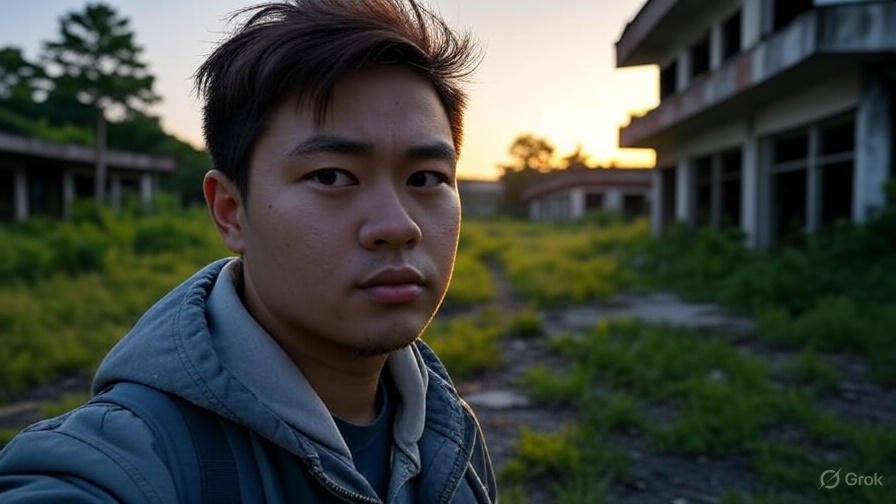Why Lavasa is Abandoned: Nestled in the scenic Western Ghats near Pune, Lavasa was once envisioned as India’s first privately built hill city, a vibrant escape modeled after Italy’s charming Portofino. Promoted as a luxurious, sustainable urban haven, it promised modern amenities, stunning landscapes, and a high-quality lifestyle. Yet, today, Lavasa stands as a ghost town—its colorful buildings fading, streets deserted, and dreams unfulfilled. So, what went wrong? Let’s explore the reasons behind Lavasa’s abandonment.
Table of Contents
A Grand Vision That Sparked Hope
In the early 2000s, billionaire Ajit Gulabchand, chairman of Hindustan Construction Company (HCC), dreamt of creating a private hill city in Maharashtra’s Mulshi Valley. Lavasa was planned to span 25,000 acres across seven hills, housing up to 300,000 residents in five towns. The first town, Dasve, was partially completed by 2010, featuring lakeside apartments, hotels, and a promenade. The city aimed to blend New Urbanism principles with eco-friendly design, offering:
- Centralized water supply with drinkable tap water
- Walkable neighborhoods with shops, homes, and recreational spaces
- A private governance model free from state interference
Lavasa initially attracted tourists and investors, with its Mediterranean-inspired architecture and serene lakefront. But beneath the surface, cracks began to emerge.
Environmental Violations Halted Progress
Lavasa’s ambitious construction came under scrutiny for flouting environmental regulations. In 2010, the Union Ministry of Environment and Forests (MoEF) issued a stop-work order, citing violations of the Environmental Impact Assessment (EIA) notification of 1994. The project, built in the ecologically sensitive Western Ghats—a UNESCO World Heritage Site—was accused of:
- Haphazard hill cutting and quarrying that damaged local ecosystems
- Failing to obtain mandatory clearances for projects above 1,000 meters
- Causing landslides due to unregulated construction
The MoEF’s intervention, spurred by a public interest petition from the National Alliance of People’s Movements (NAPM), stalled construction for a year. Although clearance was granted in 2011 with conditions like halting hill cutting and creating an environment restoration fund, the damage to the project’s momentum was irreversible.
Controversial Land Acquisition Issues
Lavasa’s land acquisition process sparked outrage among local communities, particularly Adivasi families in 18 villages. Allegations surfaced that land was acquired through coercion or at throwaway prices. A 2015 investigation revealed that 191 hectares belonged to tribal families, leading to orders for its return. Further issues included:
- Claims that 600 hectares were improperly purchased from farmers
- Leases of 141 hectares atrequiring only 2% payment to the state
- Accusations of fraudulent land transfers from Varasgaon Dam

Financial Woes and Bankruptcy
Lavasa Corporation faced severe financial strain, exacerbated by the construction halt and inability to raise funds through an initial public offering (IPO). By 2018, the company was declared bankrupt, with debts of $610 million. The financial crisis led to:
- Unfinished buildings and crumbling infrastructure
- Irregular maintenance, power cuts, and sporadic garbage collection
- Loss of investor confidence and stalled construction
In 2023, Darwin Platform Infrastructure Ltd (DPIL) won a bid to revive Lavasa for ₹1,814 crore, but the plan failed due to delays and allegations of misrepresented finances, leading to fresh insolvency proceedings in 2024.
A Fading Tourist Appeal
Once a bustling tourist spot, Lavasa’s charm faded as maintenance dwindled and the city’s incomplete state became evident. The lack of schools, poor upkeep, and recent landslides have deterred visitors. Today, the city feels haunted, with:
- Abandoned structures and overgrown lakefronts
- Closed shops and restaurants along the promenade
- High parking fees despite minimal amenities
With only 5,000 residents and limited weekend visitors, Lavasa struggles to regain its former vibrancy.
A Cautionary Tale for Urban Dreams
Lavasa’s downfall serves as a lesson in the risks of vanity urban planning. Prioritizing luxury over community needs, ignoring environmental regulations, and mishandling land acquisition led to its decline. While the Western Ghats remain breathtaking, Lavasa’s empty streets and decaying buildings stand as a reminder that ambition without sustainability and transparency can turn a paradise into a ghost town.